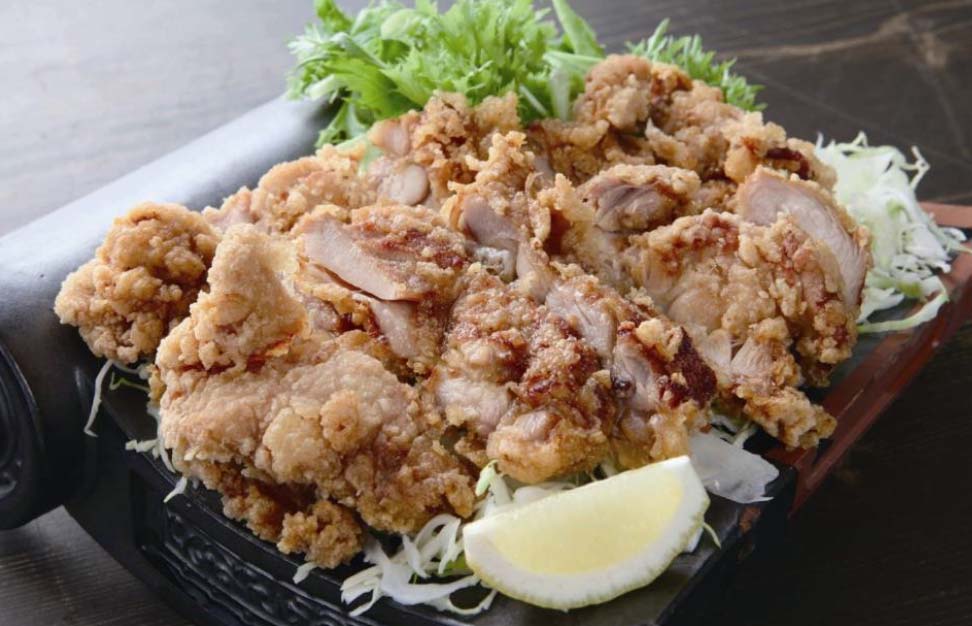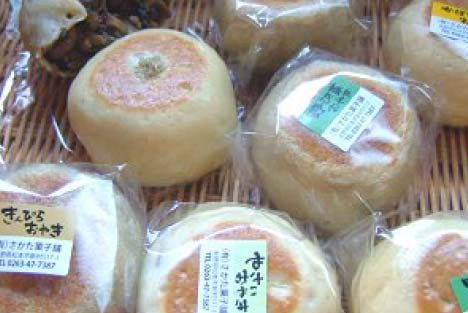 From unique local specialties and traditional delicacies to sun-ripened fruits and the wild pickings from the mountains, Matsumoto is full of gastronomic adventures that will appease any type of foodie. The city is also home to sake breweries, wineries, and craft beer makers for those who prefer to savor the local flavors in liquid form.
From unique local specialties and traditional delicacies to sun-ripened fruits and the wild pickings from the mountains, Matsumoto is full of gastronomic adventures that will appease any type of foodie. The city is also home to sake breweries, wineries, and craft beer makers for those who prefer to savor the local flavors in liquid form.
Local Food
 From unique local specialties and traditional delicacies to sun-ripened fruits and the wild pickings from the mountains, Matsumoto is full of gastronomic adventures that will appease any type of foodie. The city is also home to sake breweries, wineries, and craft beer makers for those who prefer to savor the local flavors in liquid form.
From unique local specialties and traditional delicacies to sun-ripened fruits and the wild pickings from the mountains, Matsumoto is full of gastronomic adventures that will appease any type of foodie. The city is also home to sake breweries, wineries, and craft beer makers for those who prefer to savor the local flavors in liquid form.
Local Foods

Soba (Buckwheat Noodles)
Nagano is the heartland of soba, the Japanese buckwheat noodle. Soba has a certain mystique about it and the simple preparations—often just broth and chopped tips of a green onion—highlight its subtle flavor. If you can find a restaurant that lets you watch the actual noodle-making process, be prepared to see some precision knife work by practiced hands.

Many soba shops use buckwheat that has been grown right here in Matsumoto or other places in Nagano. In the winter, try to find a place that serves tojisoba, another specialty that involves using a mini bamboo basket to dip the noodles into a steaming hotpot.

Sanzokuyaki
Sanzokuyaki is a special kind of fried chicken that was developed in Matsumoto. The dish is made by marinated whole pieces of chicken thigh or breast meat with garlic and other flavors and then deep-frying it to juicy perfection. The name literally translates to “mountain bandit fry.”

Its popularity has boomed in recent years and you can find it served in many of the restaurants (especially izakaya) around Matsumoto. Depending on the restaurant, the marinade, texture, and type of chicken vary.

The Edible Horse
Although eating horse meat may be hard to swallow, in Matsumoto it is a premium item on the menu. If you’re already well-adjusted to eating other varieties of sashimi, give basashi (horse sashimi) a try. Sakura nabe, a sukiyaki hotpot featuring thinly sliced horse meat and vegetables, may be a more approachable choice.

Sansai
The surrounding mountains bless Matsumoto with a variety of wild, edible plants and herbs (collectively known as sansai). They generally appear in spring and their unique, wild flavors are incorporated into local cooking and restaurants menus, with tempura being one of the most popular preparations.

Oyaki
Oyaki are a local specialty with a long history. They resemble a cross between a dumpling and a stuffed bun filled with ingredients and then steaming and/or grilled. Common fillings are Nozawana greens, eggplant, mushrooms, red bean paste, and sansai. You can buy them all over Nagano, everywhere from supermarkets to oyaki specialty shops.

Pickles
Nagano’s famous pickles are made by taking advantage of the local ingredients. Popular kinds include those made with miso (misozuke), sake lees (kasuzuke), and wasabi. Particularly unique are Nozawanazuke made from the local Nozawana greens; pickled Inekokina greens from Inekoki village, and Nagawa’s red turnip pickles. Find pickles at farm stands, Ishii Miso Brewery and souvenir shops.
Specialty Ingredients

Honey
A rare species of native Japanese bee has been raised in and around Matsumoto since long ago. The honey from these bees is considered extremely value and contains traces of royal jelly and propolis. It tends to taste different and more complex compared to the typical honey sold in stores, making it an excellent souvenir from your trip to Matsumoto.

Shinshu Miso Paste
Shinshu (a.k.a. Nagano) is famous for its miso, a delicious, savory paste made by fermenting soybeans. Matsumoto is one of the major production areas for miso, as the cool climate is ideal for aging it to perfection. Miso is known for its use in miso soup, but you can enjoy it in many ways—Try it in sauces, dressings, for grilling, and even in sweets. (Find shops selling miso)

Iwana
The clear streams around Matsumoto are home to iwana, a freshwater fish related to the trout. Iwana has become part of the local food culture and you can find it served grilled or even as sashimi. In Kamikochi, try Kamonjigoya’s grilled iwana—They are taken directly from the stream and cooked over an open fire. The entire fish can be eat from head to tail!

Wild Mushrooms
Surrounded by forested mountains, Matsumoto is heaven for mushroom lovers. Many types of mushrooms, including the prized matsutake can be found in the region. In the fall, mushroom hunters sell matsutake at roadside stalls and mushrooms of all kinds are cooked into the local restaurant menus. A hot bowl of soba noodles with wild mushrooms is a delicious way to get a taste for the local fungi.
Wine, Sake, and Craft Beer

Wine
The vineyards in the Yamabe area are blessed with long hours of sunlight and soil resembling that of Bordeaux. Yamabe farmers began cultivating vines in the late 1800s and is now one of Nagano’s largest growing regions with Yamabe Winery as a top destination for wine lovers. Besides grape wine, you can find apple wines and apple ciders in Matsumoto as well.

Sake
Sake is a tradition with thousands of years of history. Located among the Japanese Alps, the local sake breweries take full advantage of the pure mountain water that springs up in the area. The sake made in each brewery has its own unique flavor, which is what makes it so exciting. Free tours at Kamataya Brewery in Matsumoto and EH-Shuzo in Azumino let you learn about the brewing process and give you a chance to try the sake. Kanpai! See places that offer sake.

Beer
Nagano Prefecture is home to several craft beer brewers including Matsumoto’s very own: Matsumoto Brewery and Bacca Brewing! Also, Hotaka Beer is made in the neighboring city of Azumino. You can enjoy the regional beers on tap in some bars in the city or purchase them in bottles and cans at local liquor shops and supermarkets.
Fruit and Sweets

Apples
The Azusagawa area west of central Matsumoto is well known for its superb apples. Their crisp texture and sweetness have made them a famous brand of their own throughout Japan. Other unique types grown in Nagano include Sun Fuji, Shinano Sweet, and Akibae. During the harvest season from September to November, many orchards offer apple picking activities.

Yamabe Grapes
Climate, sunlight, and soils has made the Yamabe region of eastern Matsumoto an excellent grape growing ever since the first vines were introduced to Japan. Visit Yamabe in the summer and early autumn and you’ll see the vines heavy with plump grapes. In the harvest season, you can buy freshly picked grapes all around Matsumoto.

Traditional Japanese Confections
As the tea ceremony played a big role in the castle town culture of Matsumoto, the tradition of making the Japanese confections served with the tea thrived during the Edo Period. Local confectioneries developed their own styles different from those of Kyoto or Edo and the sweets took on unique Matsumoto-born flavors, a tradition that continues to this day. Get a taste at Kaiundo, Fujimura, Okinado, and other long-standing confectioneries.
This website uses cookies to ensure you get the best experience on our website. Learn more